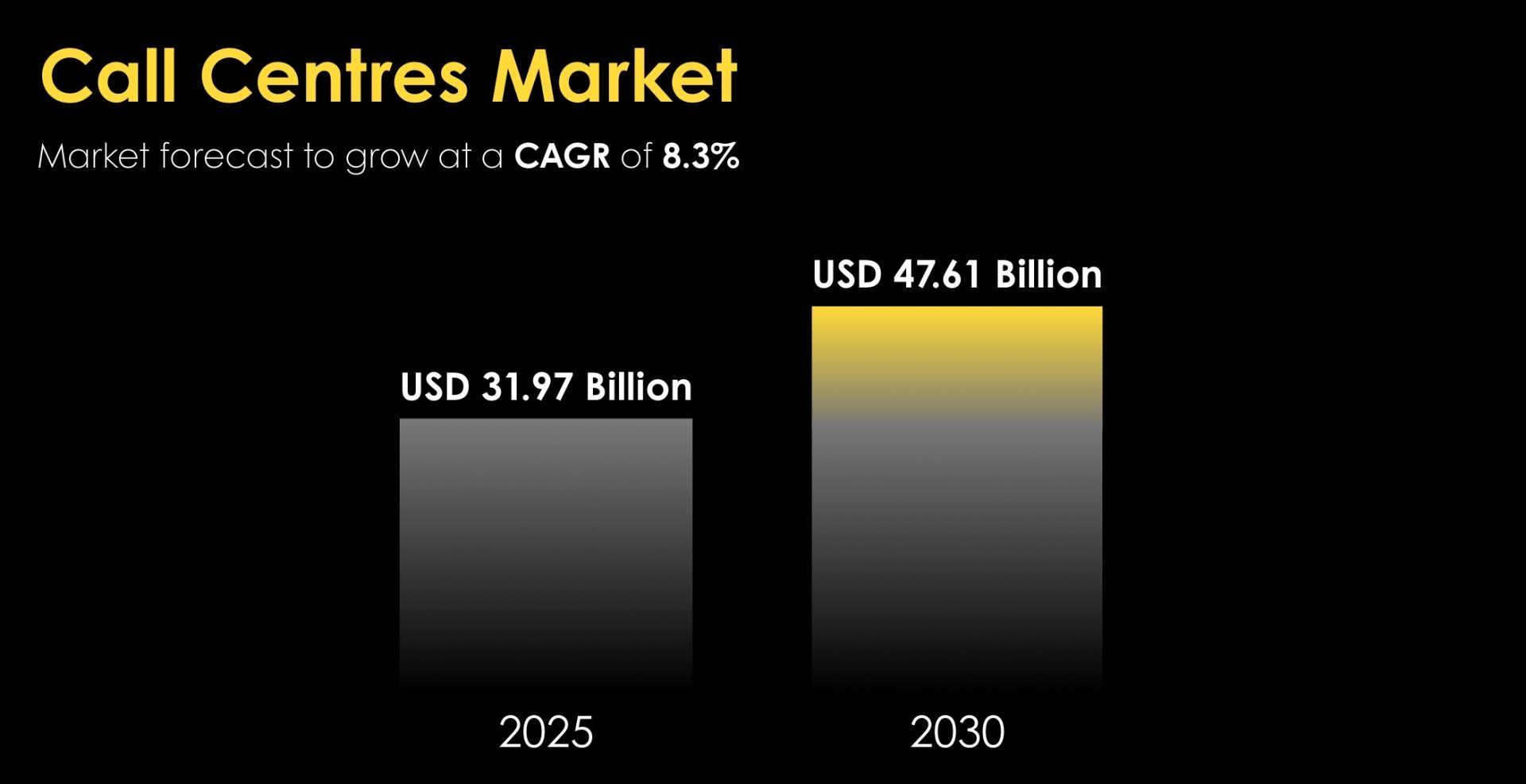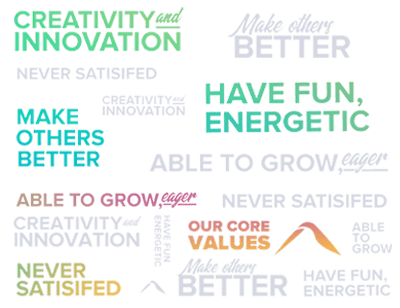Introduction:
In the digital age, call centre provide customer support and enhance the customer experience for businesses across various industries. However, the gap between call centre businesses and customers can sometimes be challenging, resulting in frustrated customers, and missed opportunities. Bridging this gap is crucial for fostering positive relationships, building customer loyalty, and, ultimately, driving business growth.

This blog post aims to provide valuable insights and practical tips on effectively bridging that gap. However, before learning about the ways to overcome the gap, it is significant that we know about the reasons or causes of such a gap between customers and service providers.
Reasons for the Gap Between Customers and Call Centre Businesses
Customer support services have a vast market, and in such a market, it is understandable that a gap will appear between customers and service providers. According to Bain & Company‘s article “Keeping up with your customers,”80% of service providers are confident that they deliver high-quality services; conversely, customers believe that only 8% of these service providers offer high-quality services
It is well known that various factors influence the performance of call centre and the quality of their services. Such factors are:
1. Lack of Proper Training and Knowledge
One of the primary reasons for the gap between call centre businesses and customers is the need for proper training and knowledge among call centre agents. A reliable corporate training provider can ensure that agents receive comprehensive knowledge of the product or service, enabling them to address customer inquiries effectively. Customers expect prompt and accurate responses, and when agents are ill-prepared, it leads to frustration and dissatisfaction.
As per the Huff Post article Not Investing in Employee Training Is Risky Business, a 24% higher profit margin is achieved by companies that invest in training
2. Inadequate Communication Skills
Effective communication is crucial for bridging the gap between businesses and customers. Call center agents who lack strong communication skills may need help understanding customer concerns and expressing them clearly. This communication breakdown can result in misunderstandings and dissatisfaction.
As per a Forbes article 3 Ways Leaders In The Workplace Can Create More Time For Deep Learning, 218% higher income per employee is attained by companies that offer formalized training
Solution: Prioritize communication training for agents. Improved listening, empathy, and active communication skills will help agents build rapport and meet customer needs.
3. High Agent Turnover
Frequent agent turnover significantly contributes to the gap between businesses and customers. When agents leave the organization frequently, it disrupts the continuity of customer relationships and hinders the development of in-depth product knowledge. This turnover also leads to inconsistency in service quality, as new agents take time to become proficient in handling customer interactions.
As per the SHRM article Don’t Underestimate the Importance of Good Onboarding, a great onboarding and training shows that 69% of agents are more likely to stay with a company for at least three years.
Solution: Improving employee satisfaction, offering career growth opportunities, and fostering a positive work culture can help reduce agent turnover, ensuring excellent stability in customer-agent relationships.
Ways to Bridge the Gap
By implementing the right strategies, businesses can enhance their call centre operations, improve customer satisfaction, and strengthen customer relationships. We have already provided some solutions; however, let us discuss some of the ways to bridge the gap in detail:
1. Understanding Customer Expectations
The first step in bridging the gap between your call centre business and customers is to understand customer expectations deeply. Recognize that customers seek efficient, personalized, and empathetic interactions when reaching out for support. Analysing customer feedback, conducting surveys, and monitoring call recordings can provide valuable insights into their needs, preferences, and pain points. Use this information to align your call centre operations with customer expectations.
2. Empowering Call Center Agents
Call center agents are the frontline representatives of your business and empowering them is crucial for bridging the gap with customers. Provide comprehensive training programs focusing on product knowledge, communication skills, and problem-solving techniques. Encourage a customer-centric mindset and emphasize the importance of empathy and active listening. Equip agents with the necessary tools, resources, and technologies to handle customer inquiries effectively. This can include access to knowledge bases, customer relationship management (CRM) systems, call routing systems, and call center analytics software.
3. Enhancing Communication Channels
To bridge the gap effectively, businesses must offer a variety of communication channels to customers. While phone calls remain essential, it is important to integrate other channels such as live chat, email, social media, and self-service options. This provides customers with the flexibility to choose their preferred method of communication.
As per CX today’s article Delivering an Excellent Omni-channel Experience-In the last 15 years, the number of touch-points customers utilize before buying has tripled, i.e., on average, from two to six
Ensure seamless integration between these channels, allowing customers to transition between them without having to repeat information. Implementing intelligent routing systems can also direct inquiries to the most appropriate agents or departments, reducing customer frustration and wait times.
4. Implementing Personalization and Proactive Engagement
Personalization is another critical factor in overcoming the gap between businesses and customers. Leverage customer data to create personalized experiences during interactions. Use CRM systems to store relevant customer information, including previous inquiries, purchase histories, and preferences. This enables agents to provide tailored solutions and recommendations, making customers feel valued and understood. Additionally, proactive engagement is crucial for bridging the gap. Implement outbound calls or personalized follow-ups to address potential issues, gather feedback, or provide additional assistance. These proactive measures demonstrate a commitment to customer satisfaction and can prevent problems from escalating.
5. Monitoring and Analyzing Performance
Regularly monitoring and analyzing call center performance is essential to bridge the gap effectively. Implement metrics and key performance indicators (KPIs) to assess agent productivity, call resolution rates, customer satisfaction scores, and average handling times. Analyze these metrics to identify areas for improvement, detect recurring issues, and implement targeted training programs. Real-time monitoring and analytics tools can provide valuable insights into agent performance, customer sentiment, and call center operations, enabling businesses to make data-driven decisions.
6. Continuous Improvement and Feedback Loops
Bridging the gap between your business and customers is an ongoing process that requires continuous improvement and a feedback loop. Encourage open communication channels between call center agents, supervisors, and management. Regularly gather customer and agent feedback to identify pain points and improvement areas. Actively listen to customer feedback, address concerns promptly, and use the insights to refine your call center operations. Additionally, foster a culture of continuous learning by providing ongoing training, workshops, and professional development opportunities for agents.
As per Microsoft’s State of Global Customer Service Report, 77% of customers view brands more favorably if they proactively invite and act on customer feedback
Conclusion
Bridging the gap between your call centre business and customers is vital for enhancing the customer experience and driving business success. Companies can bridge this gap by understanding customer expectations, empowering call centre agents, and implementing the strategies discussed above. The result will be satisfied customers who feel valued and understood, leading to stronger customer relationships, increased loyalty, and positive word-of-mouth. Embrace the evolving landscape of call centre operations and leverage technology to provide seamless and efficient customer support. With the right strategies, businesses can build lasting connections with their customers, support revenue growth, and succeed in today’s competitive market.
Discover strategies for effective call etiquette in our whitepaper on scaling empathy quotient.
Frequently Asked Questions
1. What is the reason for the gap between call centres and customers?
The gap between call centres and customers is created because of:
- Inefficient communication
- Delayed response time
- Robotic conversation
- Unempathetic conversation
- Low rate of first contact resolution
2. Is training agents vital for improving customer satisfaction?
Indeed! Product knowledge alone is not enough for agents to deliver a great customer experience.
Agents need to be trained in empathetic listening, emotional intelligence, and conflict avoidance.
3. What are the challenges faced by call centres in enhancing customer experience?
Some of the challenges faced by call centres in improving customer experience are:
- High agent turnover
- Absence of proper training
- Overreliance on scripts
- Limited access to customer data
- Pressure to lessen call handling duration
4. Are human agents replaced by automation?
Repetitive and monotonous tasks are taken care of by automation. Automation empowers and assists
agents by freeing them so that they can handle more intricate tasks that require emotions and human touch.
Sources :
Call Centres Market – Global Forecast 2025-2030
Keeping up with your customers
Not Investing in Employee Training Is Risky Business
3 Ways Leaders In The Workplace Can Create More Time For Deep Learning,
Delivering an Excellent Omni-channel Experience
State of Global Customer Service Report




